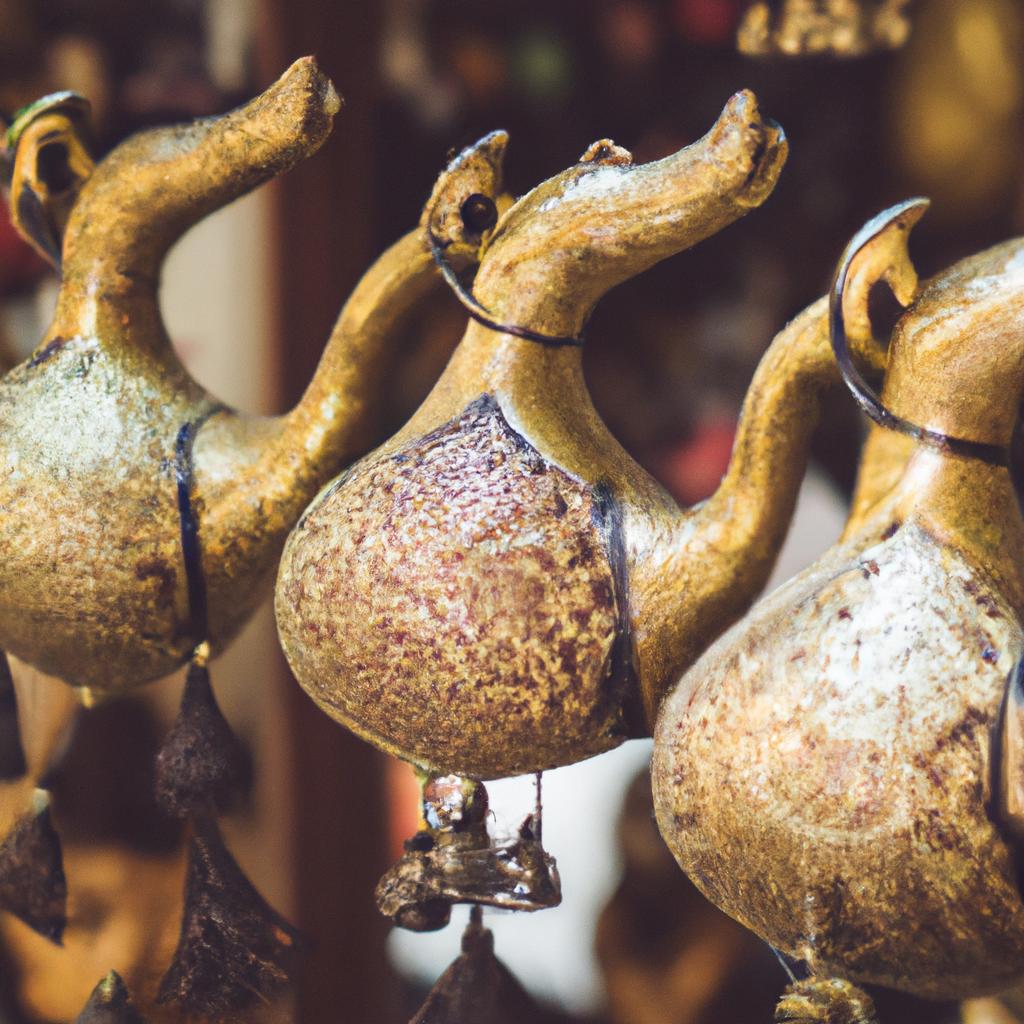In a world increasingly dominated by mass production and automation, the allure of traditional crafts stands as a testament to human artistry and cultural heritage. Each handcrafted item tells a story, woven from the threads of history, tradition, and personal touch. As travelers embark on their journeys, they are often faced with the temptation of generic souvenirs—shiny trinkets and store-bought mementos that lack the soul and narrative of their handcrafted counterparts. In this exploration of authenticity, we delve into the beauty of traditional crafts, illuminating the intricate processes and cultural significance behind each creation. Join us as we celebrate the artisans who dedicate their lives to preserving age-old techniques and the unique treasures that beckon us to connect with the essence of the places we visit. Through this journey, we invite you to reconsider the meanings of souvenirs and discover the rich, tangible expressions of culture that reside in the world’s traditional crafts.
Exploring Cultural Heritage Through Handcrafted Treasures
Handcrafted treasures resonate with the stories of the artisans who create them, each piece an echo of time-honored traditions that breathe life into cultural heritage. Unlike mass-produced souvenirs, which often lack soul and narrative, authentic crafts are imbued with personal touches and skills honed through generations. These treasures not only serve as aesthetic embellishments but also embody the essence of the places they originate from, offering a glimpse into the values, beliefs, and practices of their cultures.
When seeking genuine cultural experiences, consider the unique skills involved in traditional craftsmanship. From the intricate beadwork that reflects tribal history to the delicate weaving techniques passed down through families, each craft reveals the heart of its community. Here are some notable craft types that celebrate heritage:
- Pottery: Vibrant designs inspired by ancient traditions.
- Textiles: Handwoven patterns that tell stories of identity.
- Woodwork: Masterful carvings that connect with nature.
- Jewelry: Adornments that represent cultural symbols.
This connection to history enhances the value of these handcrafted items, fostering a deeper understanding of the cultural narratives they uphold. Below is a simple comparison of traditional crafts versus generic souvenirs:
| Aspect | Handcrafted Treasures | Generic Souvenirs |
|---|---|---|
| Authenticity | Richly embodies cultural stories | Common and often mass-produced |
| Craftsmanship | Unique and skillful creation | Manufactured without personal touch |
| Connection | Reflects deep-rooted traditions | Rarely evokes emotional ties |

The Lasting Value of Supporting Local Artisans
When you choose to support local artisans, you not only acquire a piece of craftsmanship that carries story and heritage but also contribute to the preservation of cultural traditions. Each item produced by these skilled hands is a testimony to the time-honored techniques passed down through generations. Opting for handcrafted goods allows you to foster a deeper connection with the communities you encounter, enriching your travel experiences. By purchasing straight from the source, you can often hear the captivating tales behind each piece, making your souvenirs more than mere decorations—they become treasured mementos infused with significance.
Furthermore, supporting local artisans bolsters local economies and encourages sustainable practices. By investing in these unique items, you play a crucial role in helping families maintain their livelihoods and promote cultural continuity. Consider the ripple effects of your choices: when you buy local, you help:
- Preserve an artisan’s skill that might otherwise fade away.
- Encourage eco-friendly production methods that often accompany traditional crafts.
- Strengthen community bonds as artisans reinvest their earnings locally.
In contrast to the mass-produced alternatives, the lasting value of these handcrafted pieces transcends their aesthetic appeal. Each item is imbued with creativity and individuality, often showcasing techniques and materials that are specific to the region’s unique identity. This not only heightens the pleasure of ownership but also fosters a sense of responsibility to share these stories with others. Below is a comparison of generic souvenirs against handmade crafts:
| Generic Souvenirs | Handmade Crafts |
|---|---|
| Mass-produced, lacking character | Unique, every piece tells a story |
| Contributes to corporate profits | Supports local artisans directly |
| Often unsustainable materials | Frequently made from local and sustainable resources |
In a world overflowing with generic souvenirs, choosing to embrace traditional crafts not only enriches your journey but also plays a vital role in safeguarding cultural heritage and supporting local economies.

Choosing Meaningful Souvenirs: Tips for Authentic Collecting
When traveling, it’s easy to be swept away by the allure of generic souvenirs lined up in colorful shops. However, selecting items that resonate with the spirit of your experience can deepen your connection to the place you visited. To ensure your collection reflects authenticity, consider choosing souvenirs that tell a story or represent the local culture and traditions. Look for items that are handcrafted or made from local materials, as these often carry the unique fingerprints of the artisans who created them. Some key tips include:
- Research Local Artisans: Discover local markets or studios where artisans showcase their work. Engaging with the creators adds depth to the piece you select.
- Choose Function Over Form: Opt for items that serve a practical purpose in addition to being decorative—like a handcrafted bowl or a woven basket.
- Seek Unique Techniques: Look for crafts that use traditional techniques, such as pottery, weaving, or wood carving, to appreciate the skill involved.
Connecting with culture can also be explored through meaningful symbols, colors, and designs pertinent to the area. Many cultures have specific motifs or styles that signify historical events, beliefs, or local ecology. To help narrow your choices, you might consider comparing the unique attributes of different crafts. Utilizing a simple table like the one below can help you keep track:
| Craft | Symbolism | Location |
|---|---|---|
| Pottery | Community and Togetherness | Mexico |
| Textiles | Heritage and Identity | Peru |
| Wood Carvings | Nature and Spirituality | Indonesia |
By thoughtfully selecting souvenirs that celebrate the authenticity of each culture, you’ll not only enrich your collection but also carry a piece of the journey with you that is steeped in meaning and diversity.
Key Takeaways
As we conclude our exploration into the enchanting world of traditional crafts, it becomes clear that these art forms are more than mere objects—they are treasures steeped in history, culture, and the unique stories of the people who create them. While generic souvenirs may offer a quick fix for tourism, they often lack the soul that authentic crafts possess. Each piece tells a tale, inviting us to connect with distant lands and timeless traditions in a way that mass-produced items simply cannot.
In a world increasingly driven by uniformity, choosing traditional crafts over generic souvenirs is an act of appreciation for the artisans and their age-old techniques. It’s a celebration of individuality in a sea of sameness, and an opportunity to carry home a piece of genuine heritage. So the next time you venture into the vibrant markets or quiet workshops of new destinations, remember that the beauty of authenticity lies in its reflection of human creativity, connection, and resilience. Embrace the stories woven into every stitch, carve, and brushstroke, and let your memories be as unique as the crafts you choose to bring back. After all, the heart of a place is best captured not in replicas, but in the authentic expressions of its people.
